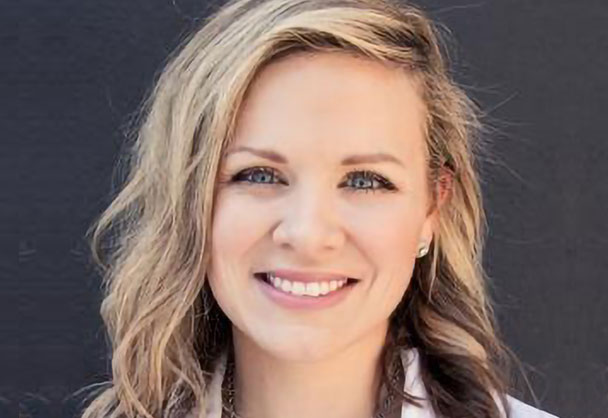Breaking Down Silos with Pharmacy Intelligence
Podcast Episode 19
Introduction
In the struggle to keep up with everyday demand, health system pharmacies must overcome disparate data systems, inadequate information flow, and incongruous workarounds that greatly reduce inventory accuracy. Find out how pharmacy leaders are breaking down these data silos with advanced analytical tools that provide visibility, insight, and workflow enhancements, leading to inventory optimization and cost reduction.
Participants

Andrea Jarzyniecki, Pharm.D., BCPS
Director of Pharmacy, Archbold Medical Center

Debb Peterson, BSPharm, MBA
Field Strategist, Omnicell One, Omnicell
Episode Highlights
Q: Archbold Medical Center is a thriving health system with four hospitals, three nursing homes, 540 beds, and thousands of patients. Could you please describe the unique situation at Archbold Medical and how data and analytics have helped transform your health system?
Andrea Jarzyniecki: At Archbold Medical Center, data and analytics have changed how we approach health care. Previously, our medication management at Archbold was evolving. We had a manual system for pharmacy procedures and monitoring drug shortages. These manual processes generated stress and additional work, resulting in things falling through the gaps and losing precious time away from focusing on patients.
As a result, I asked myself what kind of inventory strategy I should have? What challenges do we face? What do we hope to accomplish?
We replaced the older cabinets with Omnicell XT Automated Dispensing Cabinets. It took much effort to put together a fleet of hardware and the real estate that we needed to achieve our goals in safety and efficiency. Data and analytics became central in figuring out the next steps. To prioritize our medication system, we wanted to determine the work that matters and what we're doing to deliver quality and cost return on investment (ROI).
Q: Debb works directly with Andrea at Archbold to transform intelligence. Tell us about the health system's journey to embrace inventory management?
Debb Peterson: One of the most valuable aspects of our collaboration is the relationships we've built between Omnicell field strategists and hospital pharmacy leaders. Our partnership has been a resounding success. Even under ideal circumstances, keeping track of medication inventory can be challenging. Omnicell One provides a safety net for catching things that may be out of whack. It alerts users to data anomalies. Consider the cost of oncology medications, which averages $20,000 per therapy.
In some cases, questions may arise, such as: What happens if a patient does not receive the therapy? Who is responsible? Do we have the option of returning it? Frequently, the answer to these questions is no.
Managing pharmacy inventory based on your data, as Archbold has done, allows you to discover numerous opportunities to improve by using your resources more effectively.
Andrea Jarzyniecki: I like pharmacy intelligence because it covers many concerns, such as inventory management, cost overages, and other issues. During the two years since the pandemic, much has changed, and with labor shortages, particularly for technicians, it is crucial to stay current. This is an area worth considering. Our technology had to be utilized effectively and efficiently to reach this point. We focus our efforts on areas where we can have the most significant impact. Looking at the whole supply chain, you may see where and why things may go differently. Taking the time to stop that cycle prevents a lot of downstream labor and effort on your part.
Debb Peterson: Andrea, you used the entire system and platform to provide insights about inventory, but you also used it to support your inventory strategy. You and your other leaders will manage it. I was impressed with how you used that platform to bring everyone together. Could you tell us how it worked for your team?
Andrea Jarzyniecki: Pharmacy intelligence provides excellent visuals. In my mind, I can see the inventory the way I want. However, I might not be able to convey that verbally to every member of my team who needs to understand the strategy moving forward. We can analyze inventory movements over time and see what we need in the system when we see an opportunity. By producing and exhibiting those visuals, we can make more efficient decisions in terms of labor and money. Both of those things would be beneficial to us while providing medical care to our patients. We've made much progress. We continue to walk the journey of getting everyone on the same page with vision and direction regarding how we approach our inventory.
Q: The Autonomous Pharmacy is a bold new vision for medication management that seeks to replace manual, error-prone activities with automated processes that are safe and more efficient. Where is Archbold on its journey to the Autonomous Pharmacy?
Andrea Jarzyniecki: Since it allows us to manage our inventory online, the Autonomous Pharmacy is essential. In the past, we still had gaps in the range of 75 percent of our products online. We can track how much of our inventory needs to be made online now that 95 percent of our stock is available via the tools.
Debb Peterson: We all know that data is only as powerful as it can be consumed when your entire system feeds it. Pharmacy intelligence would be an integral part of the Autonomous Pharmacy journey. For customers viewing their data for the first time, it can be clear that they may need to reset what they previously believed about their data. And those of us who have lived any day in a pharmacy know that if something runs out at 5 p.m., no matter what the reason was, it kind of places a permanent stigma on that medication. It leads to stockpiling based on the gut rather than reality.
Andrea Jarzyniecki: You correctly describe it as a gut feeling. However, the gut may be pretty persuasive. You need to see those numbers to understand what's going on with your inventory. But first, you need to see the data. This program can answer many questions, such as if you should carry a product, whether or not you need that much, which ones you should cut back on, and what medication alternatives you have available. Pharmacists can use pharmacy intelligence tools to think about inventory management more effectively.
Oh, yes. I enjoy watching the team develop. And it does take some debate. We may talk at length about what we can or should do, and there is a conversation surrounding those decisions. But that's how we sharpen our vision as a team and move towards a common goal of providing the finest care for our patients.
Debb Peterson: During my previous career as a pharmacist, I worked with a team that collected data and made various spreadsheets, then applied its formulas and made sense of it. But half the time, something would take priority over that work. With Omnicell One, it's already queued up for you. Then you add that human element of the clinical strategist, which becomes very powerful.
Andrea Jarzyniecki: Without the field strategist, we would not be able to utilize the solution thoroughly. Debb, you have exceeded my expectations in everything you've done for me. I admire your work ethic, commitment to learning, and eagerness to succeed. You have brought the team together and taken a different approach to how we have done things before. As a result of your prompting, they reexamined the data and plan. In setting a vision, that part of the puzzle cannot be overstated. Debb, you helped bring that vision to reality and implement it throughout our health system.
Debb Peterson: Your relationship with the business is also crucial. As a first step, you outlined your vision and helped me connect with the right people. As a result of your direct engagement with our product managers and engineers, we have received your feedback directly about the product. As we move forward, your feedback will help shape our innovations. I am grateful for our relationship and thank you.
Andrea Jarzyniecki: Debb, we see a place where we can fully utilize our clinical staff so they can provide the highest quality care possible to patients. They not only practice at the top of their licenses but are also at the bedside of patients. We can eliminate some unnecessary work by streamlining the technicians' time. Due to these improvements, our system has advanced to new heights. Our pharmacists and technicians have been reassigned to areas where they can better serve our patients.
DISCLAIMER
The Future of Pharmacy Podcast is produced and distributed by Pharmacy Podcast Network. The views and opinions expressed in this podcast are those of the authors and do not necessarily reflect the official policy or position of any other agency, organization, employer or company. Assumptions made in the analysis are not reflective of the position of any entity other than the author(s). These views are always subject to change, revision, and rethinking at any time and may not be held in perpetuity.
 Back to Podcast
Back to Podcast

